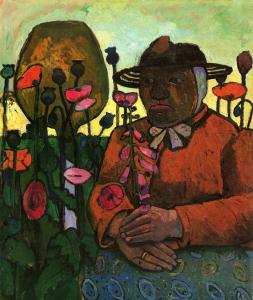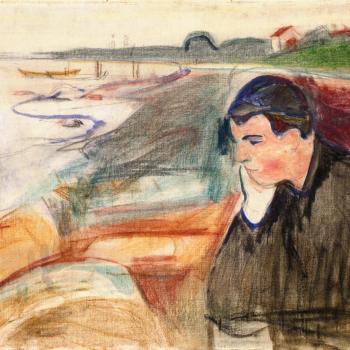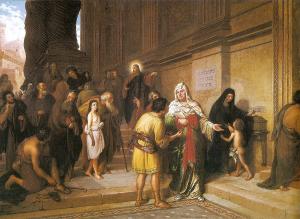
This is post is not about modesty as such. To go on about our cultural sexual and other missteps would take an entire other post (or several). My interest is, instead, in how modesty has itself become a commodity to be fetishized within (largely Traditionalist) Catholic circles. This is not surprising; sadly, it’s merely proof of how inescapable the logic of contemporary capitalism is, how charged with power the ways of the world are.
Nevertheless, we’ll have to start with a definition of modesty. The Catholic Encyclopedia defines it thus:
With chastity is often confounded modesty, though this latter is properly but a special circumstance of chastity or rather, we might say, its complement. For modesty is the quality of delicate reserve and constraint with reference to all acts that give rise to shame, and is therefore the outpost and safeguard of chastity.
Modesty is a safeguard against wrong action; that’s all the Encyclopedia has to say on the topic. Aquinas, in his charming way, has this to say:
But those women who have no husband nor wish to have one, or who are in a state of life inconsistent with marriage, cannot without sin desire to give lustful pleasure to those men who see them, because this is to incite them to sin. And if indeed they adorn themselves with this intention of provoking others to lust, they sin mortally; whereas if they do so from frivolity, or from vanity for the sake of ostentation, it is not always mortal, but sometimes venial. And the same applies to men in this respect. Hence Augustine says (Ep. ccxlv ad Possid.): “I do not wish you to be hasty in forbidding the wearing of gold or costly attire except in the case of those who being neither married nor wishful to marry, should think how they may please God: whereas the others think on the things of the world, either husbands how they may please their wives, or wives how they may please their husbands, except that it is unbecoming for women though married to uncover their hair, since the Apostle commands them to cover the head.” Yet in this case some might be excused from sin, when they do this not through vanity but on account of some contrary custom: although such a custom is not to be commended.
Again, here modesty (not named as such, though I think we can infer from the above definition that that is what he means) is primarily associated with guarding against provoking lust in others. Aquinas says that to adorn oneself out of vanity may not be a mortal sin, but doing so to get somebody’s jollies going (so to speak) is a no go. This applies equally to men and to women (though, as a medieval, Aquinas’ stronger concern is, unsurprisingly, with women).
But how is modesty talked about by many who promote it in the Church today? To take a fairly benign example, an author over at ChurchPop has said the following about veiling:
It makes the woman feel beautiful, and some husbands think that veils are “hot.” The beauty of the veil is something that honors God in the same way beautiful architecture or beautiful vestments do. They contribute to giving God the worship that is due to Him.
UPDATE 4/21/15: Author’s note: Some people object to my use of the word “hot”. I am using it in the context of Christian marriage: think Song of Songs: ‘You have ravished my heart, my sister, my bride, you have ravished my heart with a glance of your eyes, with one jewel of your necklace.’ (Song of Songs 4:9) Physical attraction is a very good and important part of Christian marriage.
In a slightly less odd tone:
Women naturally have beautiful hair, and a veil ornaments and accentuates that beauty. In general, we want to bring the best of ourselves to liturgy, and veiling is a way of doing so.
The addition to the first passage does help clarify the point (and arguably makes the use “okay,” since within marriage it seems fine to encourage “sexiness” in some sense). The word “hot,” however gets to the point: modesty is often presented as an “attractive” quality that ought to excite men (and, often does, if the “thirst” on Twitter and Facebook is to be taken to mean anything). There’s a real fetishizing of the feminine form as it exists when covered up. Anyone with experience among young Trads will have seen this. It’s in memes (here is an example, though it’s more of a quasi-meme. Most of the real stuff can seem a bit, well, at times racist); it’s on websites (another example); it’s, well, basically everywhere in the Trad community (which, in online presence anyway, remains predominantly male). Hence the “thirst” already mentioned above.
On the one hand, this seems (ironically) a way for certain forms of Traditionalist to accommodate themselves to digital culture, to turn our primary means of information dissemination into an evangelical tool. On the other, in doing so, it has come to make modesty obey the laws of Capital under which virtually everything must be commodified and fetishized (what is all of this lustful discourse around “hot” modesty but a form of fetishization?).













